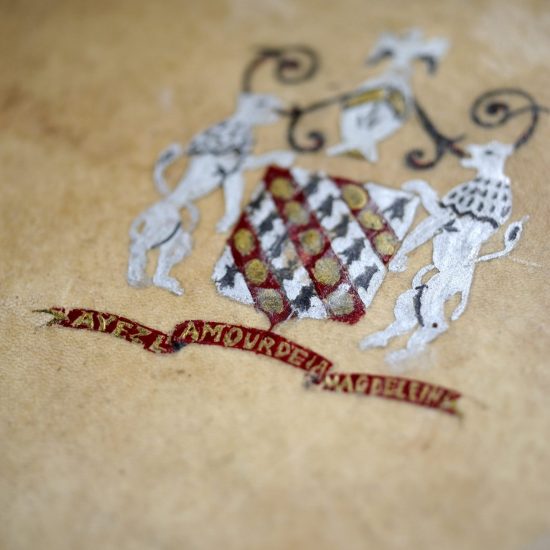
The Soul of Beaujolais
The château de Corcelles stands like a sentinel at the gates of the Beaujolais. It all started in the Middle Ages.

-
Nine centuries of history in the heart of Beaujolais wine country
Located at the border emerging from Charlemagne's legacy, between the Kingdom of France and the Holy Germanic Empire, it first played the role of a stronghold in the Middle Ages. "The Douby," which flows below the castle, symbolizes this boundary. Today, a few kilometers away, it is the border between the departments of Saône-et-Loire and Rhône.
In the 15th century, war roared in Belleville. Corcelles was partially destroyed. Antoine de Laye undertook the reconstruction of the castle, accompanied by his son. Many architectural elements testify to a desire to rebuild a defensive fortress.
-
Nine centuries of history in the heart of Beaujolais wine country
It was only after the departure of the de Laye family that the Château de Corcelles took on another dimension. The Magdeleine family settled in Corcelles in 1522. This prestigious line, serving the King of France, was inspired by the new architectural trends of the Renaissance. Corcelles becomes a stately residence. The Magdeleines affixed their coat of arms at the entrance to the castle. "Have love for the Magdeleine" was their motto.
-
Nine centuries of history in the heart of Beaujolais wine country
The castle was sold in the 16th century to Lazare de Tircuy de la Barre. The family remained the owner for four centuries. The buildings underwent few architectural modifications and were spared by the French Revolution.
From the twentieth century, many restorations were undertaken, without additions or redesign.
The castle was partially registered as a historical monument on February 4, 1927.
Since 1984, it has been owned by the Richard family, who have done everything possible to restore the château and reveal the potential of the wine-growing estate's terroir.
An Imprint of the Region
Wine has always held an essential place in the region’s history and that of the castle, as exhibited by its cellar built in the 17th century. At that time, Beaujolais wines experienced great notoriety on the Lyon and Parisian markets thanks to the new roads that crossed the region, placing them at the center of an important trade route.
With the birth of AOCs from 1936 to 1988 and the Beaujolais Nouveau, the area experienced its development.

Since the Richard family purchased the Estate in 1984, Château de Corcelles has been regarded as an icon of the region, particularly in Paris.
The vineyard has since grown and now has 80 hectares of vines spread over several appellations. Beaujolais white, rosé and red, Beaujolais Villages and three crus; Brouilly and its expressive fruitiness, Morgon and its exceptional texture, and Fleurie with its nuances and finesse.
Thanks to this mosaic of terroirs, Château de Corcelles has established itself as a flagship of the Beaujolais.

Beaujolais is a rapidly changing vineyard, between modernization, craftsmanship, and major agroecological challenges - we owe it to ourselves to be committed actors.
Sébastien Kargul, Director of Château de Corcelles.


